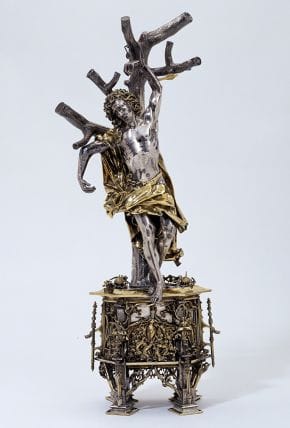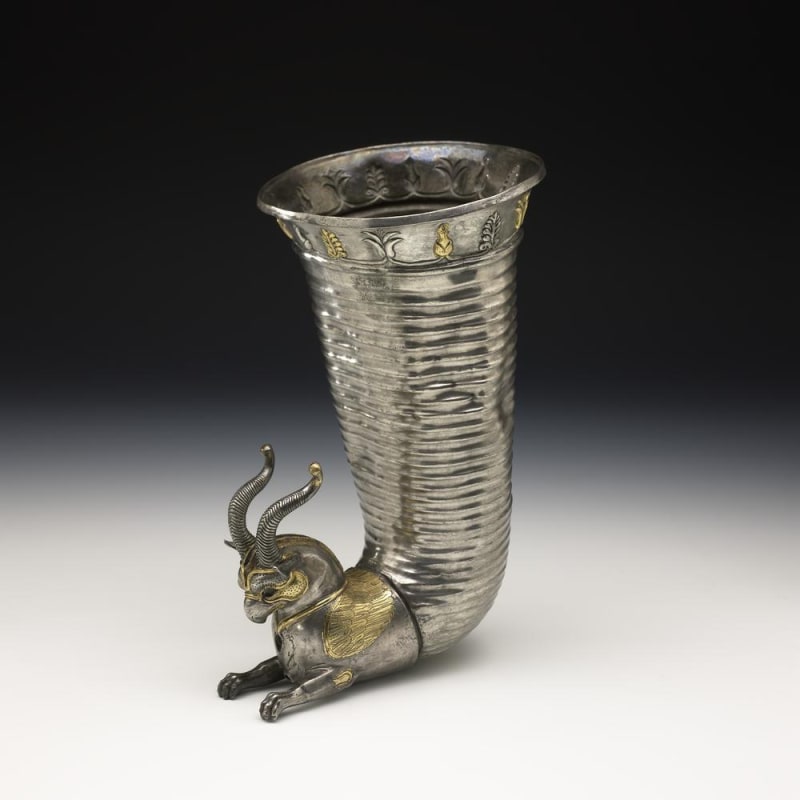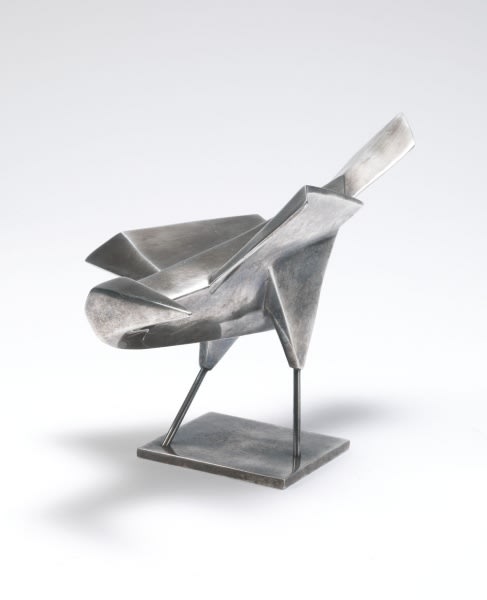Welcome to #2 in our series of Sculptors' Materials. We hope you enjoy it!
The first documentation of silver mining dates to around 3,000 BC in Anatolia, modern day Turkey. As one of the seven metals of antiquity, silver has been an important material to humankind for millennia. Silver - like gold - was treasured by many cultures for its beauty and lustre, and its ancient symbolic value as currency is probably its most recognisable incarnation. This precious metal is, however, much more versatile. Its uses range from money to ornaments, and religious talismans to medicine. Silver has also been used more recently as a conductor of heat and electricity, in photography, and more famously to make jewellery.
Although the world may be full of silver objects, precious few of them were works of contemporary art until very recently. There is scarcely a trace of silver in the entire history of Western European sculpture. With this in mind, in 2008 Pangolin London exhibited over 50 artists commissioned to produce a miniature silver sculpture for an exhibition called ‘Sterling Stuff II’, which included works by Antony Gormley, Marcus Harvey, Michael Joo and Damien Hirst.
‘Silver is one of the elements, one of the building blocks of our material world. It is a symbol of value and preciousness loaded with association even before you make it into anything. Apart from any of that it represents wealth and stature, shines like the moon and is an incredibly beautiful and seductive material. So when Pangolin asked me if I would make a piece for ‘Sterling Stuff’ I agreed. Silver used to be mined in Combe Martin where I live, and Queen Victoria’s jewellery was made from silver mined here. In ancient times artists drew with a stick of silver – it has a slightly graphic feel. Textures and edges feel crisper than bronze. It’s dreamy, other-worldly but also sensuous and sexy – natural to make sculpture with. I think I may have just begun to tap into its potential. Silver seems to magically throw out more light than it absorbs.’ Damien Hirst
The universal symbol for silver is Ag from Latin Argentum, meaning off-white. Soft, lustrous, with its mirror-bright shine, silver is the whitest and one of the most reflective of all the precious metals. On one hand its appearance and malleable qualities make it an appealing metal to use in sculpture. It can take a high degree of detail as well as polish or patina, and its pure, clear beauty can make steel look blue and iron dingy by comparison. On the other hand, silver is more fickle and expensive than bronze, it turns faster from molten to solid, and it erodes quicker.
Whether exploring scale, the physical properties of the material or pondering its ancient associations, some artists seek to diminish the widely recognised qualities of silver as a precious metal by flocking or tarnishing the surface, while others wish to enhance it and exaggerate its highly polished sheen.
The impetus to explore silver at Pangolin Editions was triggered by no other than Lynn Chadwick, who wanted to see what changes casting in bright silver would bring to his characteristically dark sculptures as he encouraged the foundry to experiment. Consequently Pangolin Editions set up a studio for the casting of silver in 2002, and have since then developed a bespoke palette of patinas for silvers, and more recently extended their range of precious metal casting to include platinum.
A FEW FACTS
1. Lynn Chadwick's sterling silver sculptures were inspired by Danish silversmith Karl Gustav Hansen who invited Chadwick along with Barbara Hepworth, Kenneth Armitage and Henry Moore to experiment with silver as a sculptural medium in the 1970s. Of all the artists, Chadwick was most drawn to it unique ability to throw back light where bronze would absorb it and this led to a series of silver sculptures and jewellery.
2. Ancient civilizations associated silver with the moon because of its greyish-white colour, which contrasts with gold and its correlation to the sun.
3. Thought to be the oldest coin in the world, the “Lydian Lion” was minted in modern-day Turkey some 2,700 years ago. Early metalworkers - chemists of sorts - made the coins from electrum, an alloy of gold and silver.
4. Silver is both aseptic and antibacterial, which make it the perfect metal to use to create sterilised objects or environments. For this reason, silver can be seen to have health benefits.
5. You may have heard the saying “born with a silver spoon in your mouth.” This was not always associated with being wealthy. In the 18th century, babies fed with silver spoons were thought to be healthier than those fed with spoons made from wood or other materials.
6. Silver is even used in the thread of some socks. Why? The silver kills bacteria that make socks smell bad!









